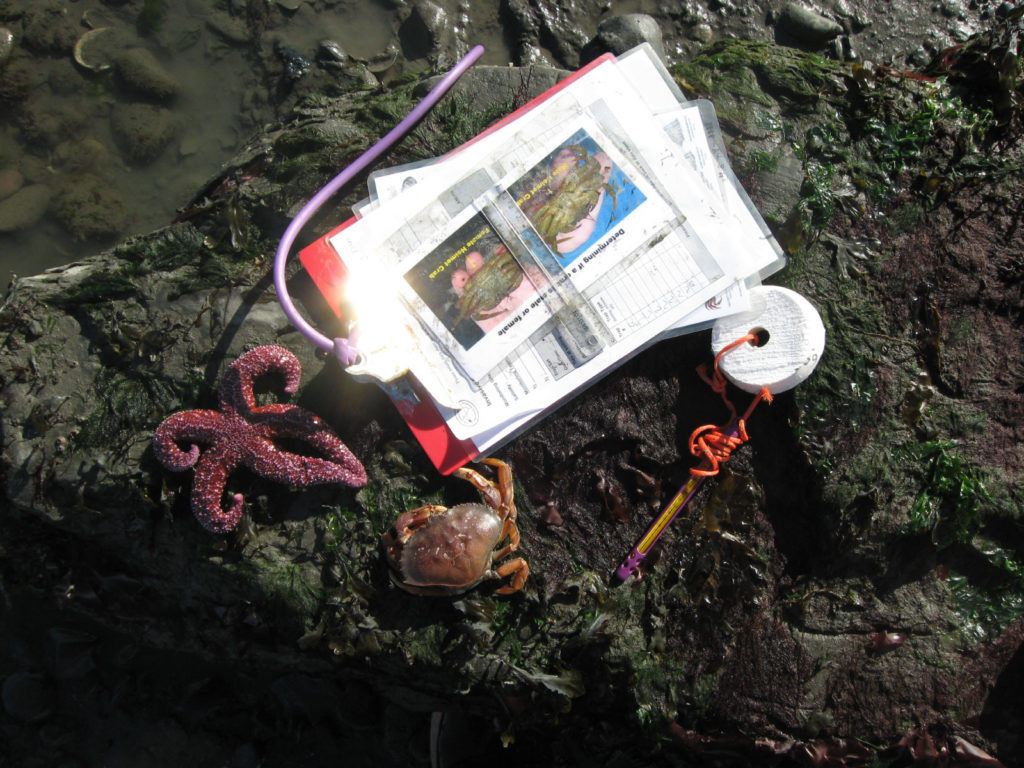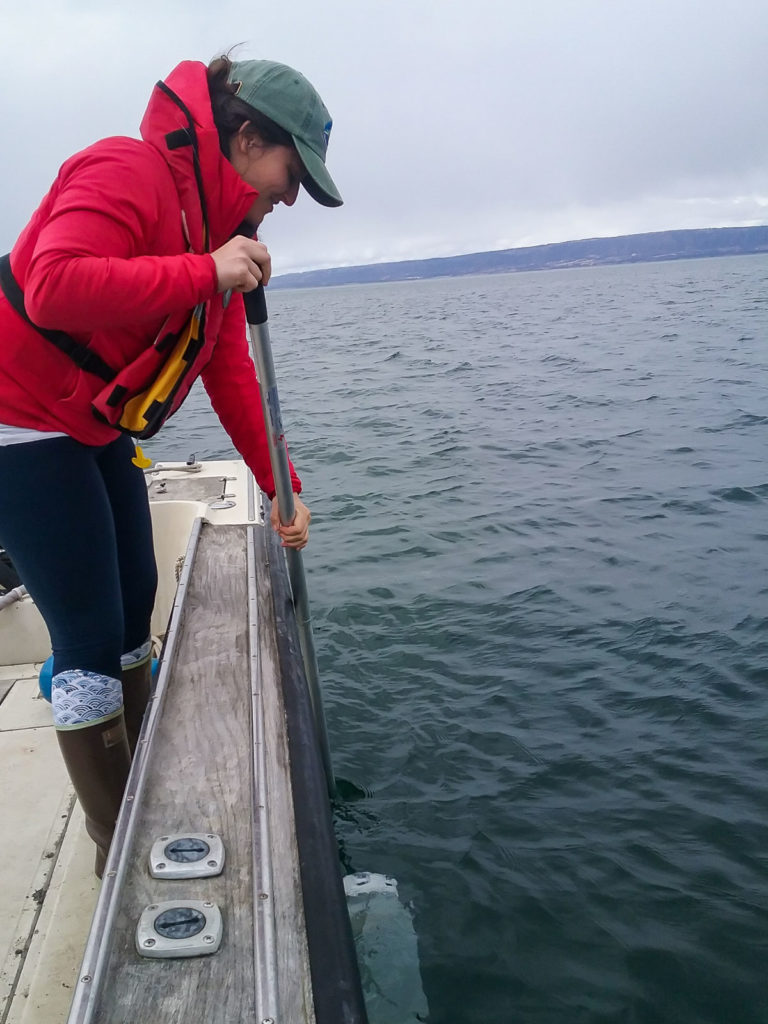In alignment with the State of Alaska and UAA responses to keep our communities healthy during this time of COVID19, our Annual Harmful Algal Bloom Community Monitor Training will be virtual again this year. The monitoring programs at Kachemak Bay National Estuarine Research Reserve (KBNERR) depend on community volunteers of all ages to assist in the detection of harmful algal blooms and invasive species. Volunteers are trained in identification and sampling techniques, and they provide a valuable service to the community. For information on how to get involved or to receive newsletters for KBNERR’s monitoring programs, please contact Jasmine Maurer.
Harmful Algal Blooms
Harmful algal blooms (HABS) occur when groups of algae produce toxins causing severe health effects and potential fatalities. The main goal of the program is to look for groups of phytoplankton that are known to carry toxins that can result in shellfish poisoning to humans and marine mammals. Phytoplankton samples are collected by trained community monitors at numerous locations throughout Kachemak Bay. These volunteers are trained in identification and sampling techniques, providing a valuable service to the community. Samples are processed and analyzed by KBNERR. Weekly reports on phytoplankton are distributed from KBNERR to state managers, private and public organizations, oyster farmers, local harvesters, tribal organizations, and our community monitors. Monitoring phytoplankton also provides us with valuable baseline information on the bloom cycles in Kachemak Bay.
Marine Invasive Species
Invasive species are the second largest cause of extinction in the United States and negatively impact native populations of fish and wildlife. Introductions to Alaskan waters have the potential for great environmental and economic impact. Invasive species are extremely difficult or impossible to remove once they are firmly established, making early detection and rapid response critical. The main goal of our invasive species monitoring is to determine which species might be the most likely to come into our area, and where they are most likely to settle. Surveying those target areas on a regular basis will hopefully result in early detection and better odds of eradication before the invaders are firmly established. Fouling invertebrates have proven to be some of the worst salt water invaders all around the world. One of the most notorious marine fouling creatures is the tunicate. KBNERR partners with the Smithsonian Environmental Research Center (SERC) Plate Watch program to survey for targeted species and measure changes in their population. In addition, we survey beaches on low tides, anchor lines in Cook Inlet near the Nikiski terminal, and heavily encrusted boats or infrastructure as they come into the area or before they are moved to new locations. Community monitors also survey multiple beaches throughout the summer looking for European Green Crabs, an aggressive invader and have been working their way up the West Coast. These voracious predators are known to disrupt natural habitats, posing a serious threat to native crab and bivalve populations.
For the more information on community monitoring at Kachemak Bay, please visit our catalog.


